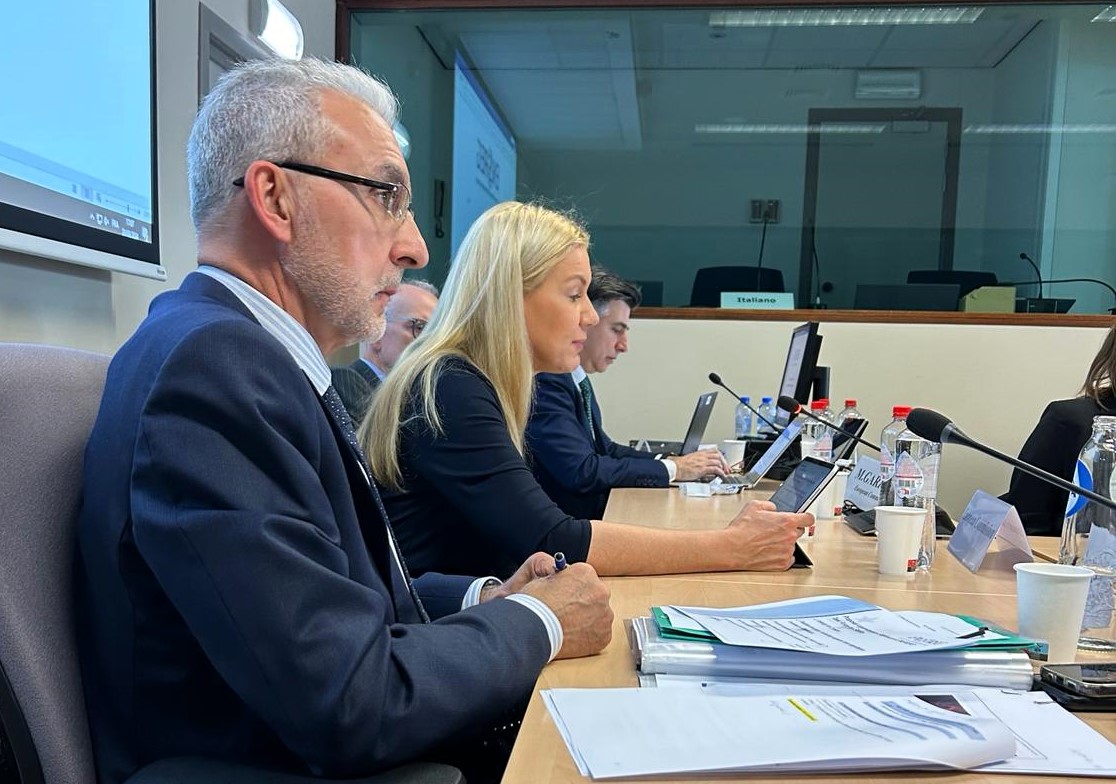Contenido principal
2024
The CSN participates in the conference about the European Plan for Fusion Energy in Strasbourg
Juan Carlos Lentijo intervened as chairman of ENSREG in the roundtable on fusion regulation and its harmonization in the international area
The conference is an initiative of the EU Directorate General for Energy to discuss the current state of fusion in the Union

The president of the Spanish Nuclear Safety Council, Juan Carlos Lentijo, as chairman of the European Nuclear Safety Regulators Group (ENSREG), participated in the European Union Blueprint for Fusion Energy that was held in Strasbourg. This forum brought together regulators, industry, representatives of research organizations and scientists involved in the development of this kind of energy. During his speech, Lentijo defended that all new technology must have "a regulatory framework that guarantees safety". In the specific case of fusion technology, the president of the CSN also recalled the importance of considering other issues such as radiation protection, waste management or emergency management.
Juan Carlos Lentijo participated in the roundtable on fusion regulation and its harmonization in the international area together with Lydie Evrard, deputy director general of the International Atomic Energy Agency (IAEA) and head of the Department of Nuclear Safety and Security; Scott Morris, director of operations of the United States Nuclear Regulatory Commission (USNRC); Olivier Dubois, commissioner of the French regulator (ASN); and Sarah Albon, chief executive of the British Health and Safety Executive (HSE), the United Kingdom's regulatory body for health and safety at work. The president of the CSN appreciated this type of initiative as a forum in which stakeholders can share the latest advances and perspectives of the sector and make it possible to obtain a framework.
The opening of this conference was carried out by the Commissioner of Energy of the European Commission, Kadri Simson, who highlighted the driving role of the EU research for the use of fusion energy and its commitment to promoting collaboration with other regions to make this energy source a reality in the short term. The director general of the IAEA
, Rafael Grossi, encouraged attendees to persevere and share knowledge that makes possible orderly regulation that allows progress and results in the security of citizens.
This day is an initiative of the EU Directorate-General for Energy to debate the current state of fusion in the Union and searches to encourage acceleration in its development, seeking concrete actions and recommendations so that the European Commission and the countries of the EU develop joint strategies. The fusion industry is having a quick evolution thanks to recent technological advances. The European Union has always strived to be at the forefront of research and technology in this field. In this sense, this type of forum allows us to reflect on regulation and financing needs, as well as debate cooperation mechanisms between governments, research centres and industry.
In Spain there are several facilities that work on fusion-related research, such as the Materials Microanalysis Centre of the Universidad Autónoma of Madrid or the Materials Research department of the School of Civil Engineering at the Universidad Politécnica of Madrid. In addition, the IFMIF-DONES consortium, created in 2021, investigates the behaviour of different materials that can be used in future nuclear fusion reactors. At this time, the objective of the project is to develop the necessary R&D&I and engineering activities to begin the construction of the facility in Escúzar (Granada). This facility will contribute to the European Fusion Programme, through its design, construction, equipment and operation.

About Fusion
Nuclear fusion is a reaction in which two nuclei of light atoms, generally hydrogen and its isotopes (deuterium and tritium), join together to form another heavier nucleus, usually releasing particles in the process. These reactions can absorb or release energy, depending on whether the mass of the nuclei is greater or less than that of iron, respectively.
An example of fusion reactions are those that take place in the sun, in which the fusion of hydrogen nuclei occurs to form helium, releasing in the process a large amount of energy in the form of electromagnetic radiation, which reaches the Earth's surface and that we perceive as light and heat.
For a fusion reaction to take place, it is necessary to reach high energy levels that allow the nuclei to approach very short distances in which the force of nuclear attraction exceeds the forces of electrostatic repulsion.
Check the glossary of technical terms here
